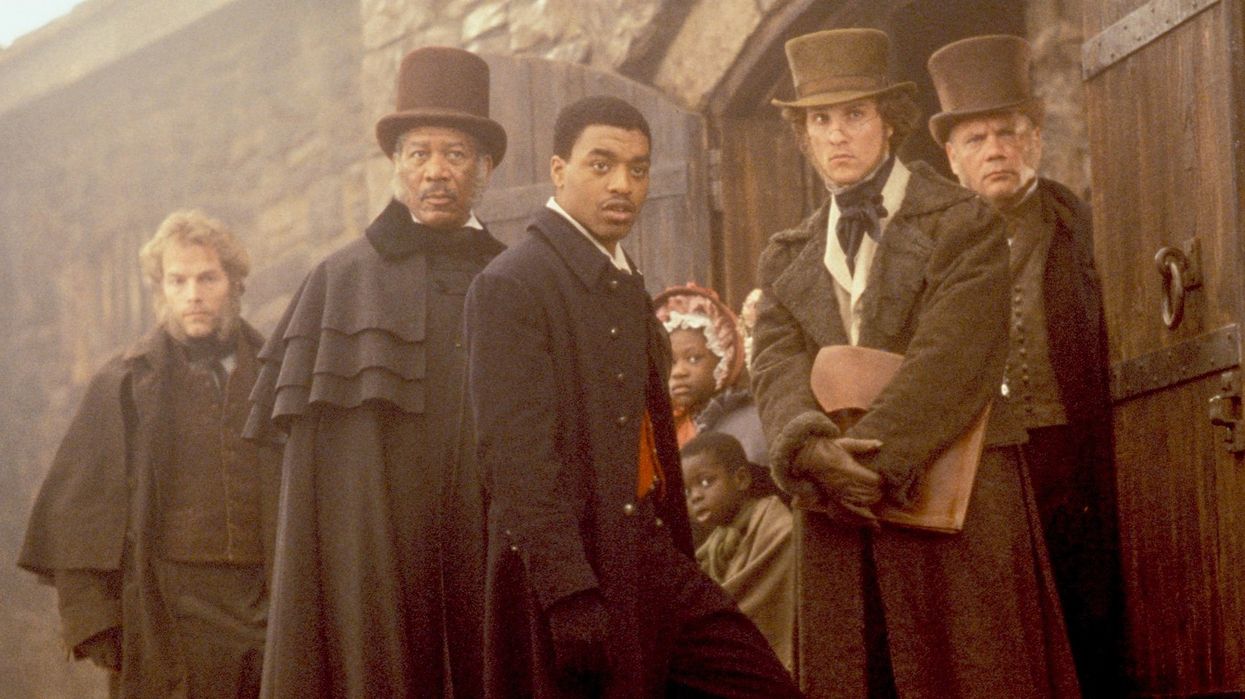Oscar-Winning Costume Designer Ruth Carter Shares Her Creative Process
Ruth E. Carter's costume design is a celebration of Black culture. What does her creative process look like?

Part of bringing a character to life on screen has to do with the way they dress. Costuming can help paint the portrait of a character, telling their story through well-researched and designed clothing that speaks their soul’s story to the audience.
One of the most prolific costume designers of our time, Ruth E. Carter, has been designing costumes for over 30 years, mastering the looks of periods and genes for over 40 films. During her career, Carter has been nominated three times for the Academy Award for Best Costume Design, winning the Oscar for her work on Black Panther and being the first Black person to win that award.
Carter’s designs are unlike anything else. Carter shared her process of designing costumes for films likeBlack Panther, Malcolm X, and School Daze with the Academy of Motion Picture Arts and Sciences, highlighting the importance of research and intention of each piece designed on the costumes. You can watch the full conversation below.
Costumes in Black Panther
For her work on Black Panther, Carter had to create pieces that represent the tribes of Africa while keeping the costume modern and inventive to show the culture of Wakanda. Carter helped build the world by using a multi-tiered process focused on creating specific looks for each group in Wakanda, giving each tribe a specific identity and purpose that spoke through their clothing and its functions.
Carter wanted to create a uniform for Okoye (Danai Gurira), the general for the Dora Milaje, that didn’t fall into the sexist costumes that many of the female heroes in superhero films often wear. Director Ryan Coogler felt that the Dora Milaje should be flat on the ground with a split toe boot. The costume portrayed strength while representing areas of Africa with the beadwork from the Turkana tribe and a leather skirt wrapped like Himba women. The costume created for the Dora Milaje honors the female form while letting them be the badass warriors they are.

The techniques used by Carter to create costumes inspired by African tribes were often the techniques used in Indigenous African crafts and tribal wear. Carter even added triangles into the surface texture of the Black Panther suit because the triangle is sacred geometry in Africa, representing the father, the mother, and the child.
There are so many fine details to each costume created in Black Panther that represent parts of tradition that another costume designer might have missed.
Working with Spike Lee
Carter has also been a long-time collaborator with Spike Lee. Her first film credit was on Lee’s School Daze, which was also Lee’s first studio picture.
The budget for Do the Right Thingwas limited, so the film relied heavily on product placement for revenue, and Carter had to incorporate brands into the saturated world Lee wanted to create while keeping in mind the everyday look of Brooklyn, New York.
By bringing in a lot of Ankara prints, African materials, and the hats worn by Mister Señor Love Daddy(Samuel L. Jackson), Carter was able to blend athleisure, pop culture, and African influence.
Costumes in Malcolm X
For Malcolm X, Carter paid close attention to the details of clothing choices worn by the people in the autobiography of Malcolm X written by Alex Haley that the film was based on.
Carter also did her own research on Malcolm X by writing a letter to the Department of Corrections in Massachusetts asking to see his file and by reading most of his writing. Carter wanted to make decisions for Malcolm's wardrobe that felt authentic and critical to his story.
There were several phases of Malcolm's life that Carter distinguished as pivotal moments that she separated and colored very specifically through costume. Carter stays connected to those phases of a person’s life by working with the story and the actor’s understanding of a character to create another layer of visual storytelling.

Costuming is so much more than just an outfit worn by a character on screen. The outfit is a story itself. It’s the character’s identity manifested into a visual medium that silently tells the audience so much about the person they are looking at. Carter’s understanding of costuming is up there with Edith Head, Milena Canonero, and Colleen Atwood, and should be celebrated for its diversity and appreciation of African influence.
What are your favorite designs by Ruth Carter? Let us know in the comments why you love that specific design!

 "'Back Home"via Mercedes Arutro
"'Back Home"via Mercedes Arutro 'Back Home'via Mercedes Arutro
'Back Home'via Mercedes Arutro 









